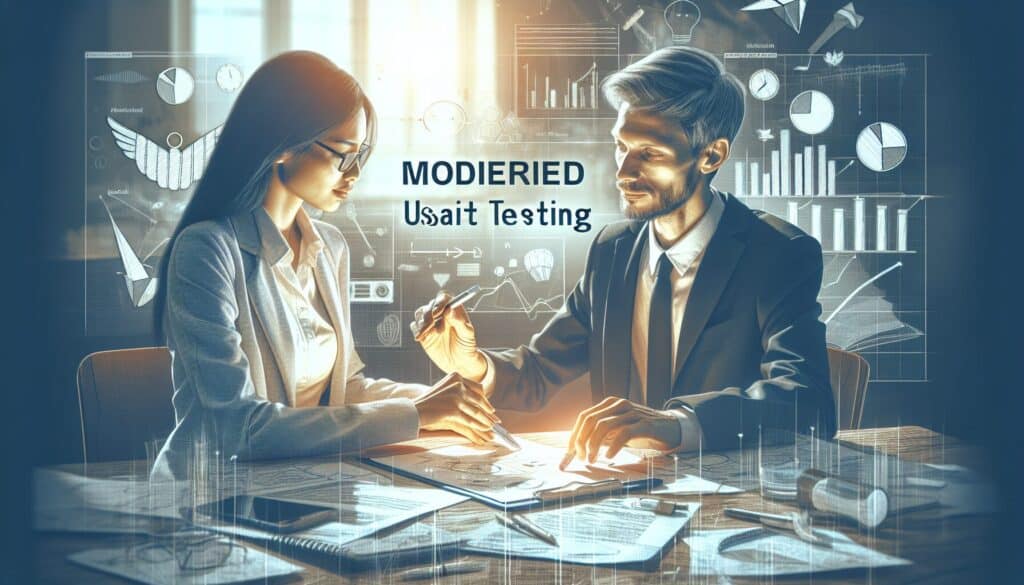A usability evaluation method where a trained moderator facilitates a session with a representative user who performs predefined tasks with a product or prototype, while the moderator observes, asks questions, and probes for insights.
- Metodologie: Clienti e marketing, Ideazione, Progettazione del prodotto
Moderated Usability Testing (In-person or Remote)

Moderated Usability Testing (In-person or Remote)
- Valutazione del progetto, Pensiero progettuale, Interazione uomo-computer, Usabilità, Test di usabilità, Esperienza utente (UX), Interfaccia utente (UI), Test dell'utente, Progettazione incentrata sull'utente
Obiettivo:
Come si usa:
- The moderator guides the participant through tasks, encourages them to think aloud, and asks follow-up questions to understand their behavior, thought processes, and any difficulties encountered. Sessions can be conducted in a lab (in-person) or online using screen-sharing and video conferencing tools (remote).
Professionisti
- Consente approfondimenti qualitativi approfonditi e osservazione diretta del comportamento dell'utente; il moderatore può chiarire le istruzioni e indagare per comprenderle; può scoprire problemi di usabilità che gli utenti potrebbero altrimenti non segnalare; flessibile per adattare attività o domande in base all'interazione dell'utente.
Contro
- Can be expensive and time-consuming per participant; Moderator presence might influence participant behavior (Hawthorne effect); Requires a skilled moderator to avoid leading participants; Scheduling can be challenging.
Categorie:
- Clienti e marketing, Progettazione del prodotto, Qualità
Ideale per:
- Gaining in-depth understanding of how users interact with a product, identifying specific usability problems, and gathering qualitative feedback on design solutions.
Moderated Usability Testing is particularly impactful in industries such as software development, consumer electronics, automotive design, and health tech, where understanding user interaction with products is paramount for successful outcomes. In the design and development phases of projects, this methodology is executed to iteratively refine products by involving participants who represent the target audience, enabling the collection of substantial qualitative data. Stakeholders such as UX designers, product managers, and engineers typically initiate this process, ensuring participants are briefed on objectives while also being encouraged to express their thoughts articulately. The environment can range from a controlled lab setting to flexible remote sessions, utilizing tools like Zoom or Microsoft Teams for effective communication. Feedback gathered can guide design iterations, revealing insights about user motivations, expectations, and pain points, which are often not apparent through surveys or analytics alone. The moderator’s capability to adapt questions in real-time based on participant reactions is invaluable for uncovering usability challenges that individuals may overlook in less interactive testing frameworks; as a result, this approach contributes to improved user satisfaction and product performance when applied effectively.
Fasi chiave di questa metodologia
- Conduct a brief introduction to establish rapport with the participant.
- Introduce the task and explain the goals of the session.
- Instruct the participant to share their thoughts aloud while interacting with the product.
- Observe user interactions closely to identify any struggles or hesitations.
- Ask follow-up questions to clarify and probe into user behavior and thought processes.
- Monitor the time spent on each task, adjusting if necessary to maintain session flow.
- Encourage participants to express their emotions and feelings about their experiences.
- Introduce new tasks or variations if needed based on participant interactions.
- Conclude with a debriefing to discuss overall impressions and specific feedback.
Suggerimenti per i professionisti
- Utilize user scenarios that reflect real-world contexts to ensure participants' feedback is grounded and relevant.
- Incorporate think-aloud protocols with clarifying prompts to elicit deeper cognitive insights into user decision-making processes.
- Implement a debriefing process immediately after sessions to capture fresh thoughts and sentiments about the usability experience.
Leggere e confrontare diverse metodologie, raccomandiamo il
> Ampio archivio di metodologie <
insieme ad altre 400 metodologie.
I vostri commenti su questa metodologia o ulteriori informazioni sono benvenuti su sezione commenti qui sotto ↓ , così come tutte le idee o i link relativi all'ingegneria.
Contesto storico
1986
(se la data non è nota o non è rilevante, ad esempio "meccanica dei fluidi", viene fornita una stima approssimativa della sua notevole comparsa)

Post correlati
Questionari sul disagio muscoloscheletrico
Test multivariati (MVT)
Analisi di regressione multipla
Sistemi di cattura del movimento
Metodo MoSCoW
Test mediano dell'umore